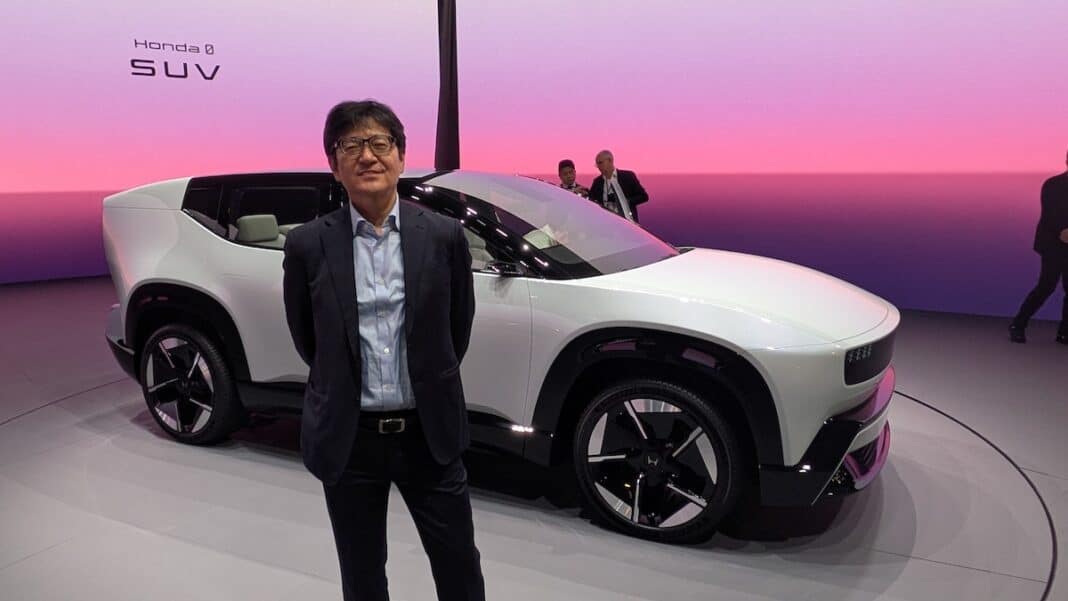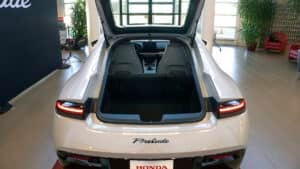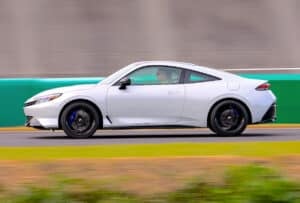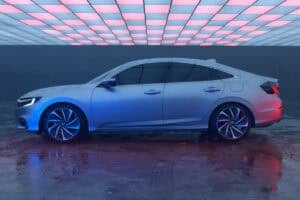Honda grabbed the four-wheeled headlines at the 2024 Consumer Electronics Show (CES) with its bold vision for a new line of BEVs called the 0 Series. These, we were promised, would be far more than me-too Tesla rivals: under the maxim ‘thin, light and wise’, the company’s clean-sheet approach would create electric vehicles that were attractive, efficient and fun to drive.
Twelve months later, Honda was back in Las Vegas for CES 2025 this week to update us on its progress so far. Happily, the two prototypes shown this year – an updated version of 2024’s dramatic, wedge-shaped Saloon, and the newly revealed, distinctive, curvy SUV (both may get new names before launch) – showed no sign of having suffered from an injection of blandness on the road to their 2026 market launches.
Related – The Honda Prelude Is Back — And It’s Not Just for Nostalgia
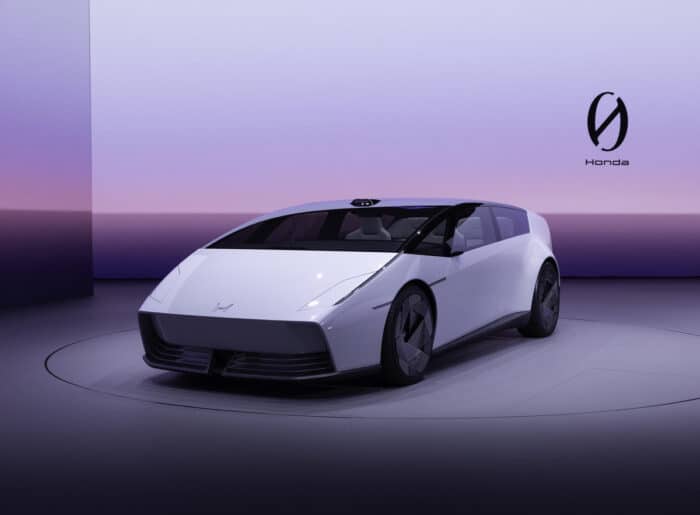
This is a great thing. Despite rising sales – just not as rapidly rising as before – BEVs are having a hard time winning over consumers. We need more BEVs that people want to buy, and styling has long been a popular route to buyers’ wallets. While several brands appear to be chasing ultimate aerodynamic efficiency at the expense of design personality, it’s reassuring to know that other opinions are available.
“Some of the control technology from the Asimo robotics, especially the logic of motion and anticipating movement, was something we tried to evolve and reflect in the new Asimo OS development.”
Honda, for example, seems unafraid to produce a long, low car at a time when some other OEMs seem to have decided that we would all rather share our line of sight with F-150 drivers. Low shapes expend less energy to cut through the air, while a low centre of gravity offers inherently better driving dynamics. Plus, the Saloon looks like a futuristic version of a 1970s Lamborghini Espada. Awesome.
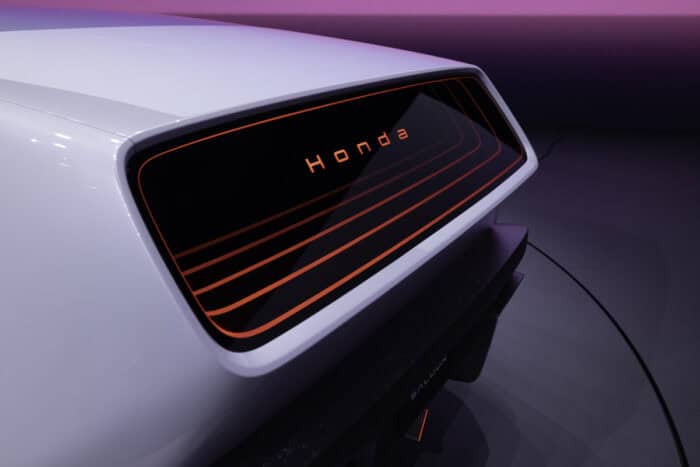
The new Hondas’ beauty is more than skin-deep, however. It’s not the first brand to embrace the concept of a software-defined vehicle (SDV), where all of the car’s major functions are managed, Tesla-style, by a central software stack developed in-house, rather than by a supplier. But Asimo OS’s connection in name and technology with Asimo, the bipedal Honda robot who first hit the headlines two decades ago, won’t hurt the marketing.
“Current BEVs Are Boring and There’s Still a Feeling That ICEs Are So Much Fun”
Speaking to me in Vegas, Mitsuru Kariya, who is leading the development of the 0 Series models as head of Honda’s BEV business unit, said that, “Some of the control technology from the Asimo robotics, especially the logic of motion and anticipating movement, was something we tried to evolve and reflect in the new Asimo OS development.”
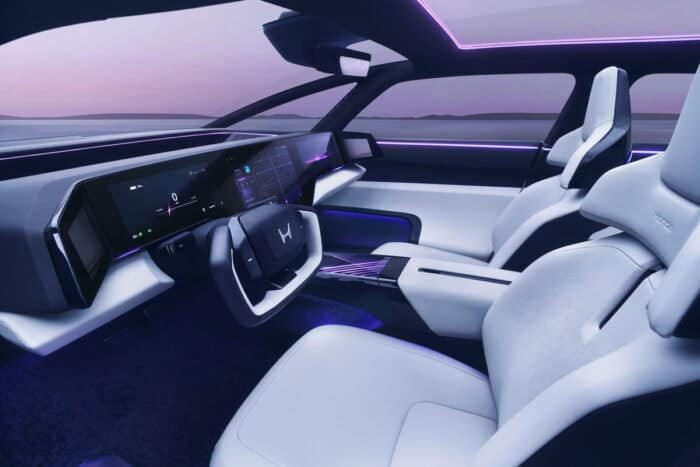
The functions controlled within the stack – all run on a single Renesas chip – will ultimately include newly developed, AI-enhanced, Level 3 automated driving (AD) options. Honda rightly believes that AD will have a role in reducing traffic accidents and fatalities, but also knows that many drivers want cars that are fun to drive. At the same show last year, he told me: “Current BEVs are boring and there’s still a feeling that ICEs are so much fun. We want to provide something that makes people say that oh, Honda BEVs are fun, too. I think achieving that will be the most difficult thing.”
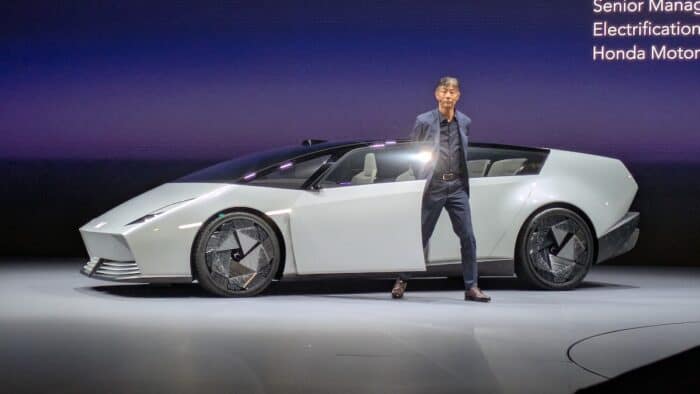
For me, the only disappointment is that these first models in the 0 Series won’t ease the dearth of affordable family BEVs in the US and Canadian markets. With Chinese brands currently priced out of selling their wares on these shores by import tariffs, that situation will likely remain unchanged for the foreseeable future. The production version of Honda’s 0 SUV is projected to start at around US$50,000, with the classy Saloon priced higher still.
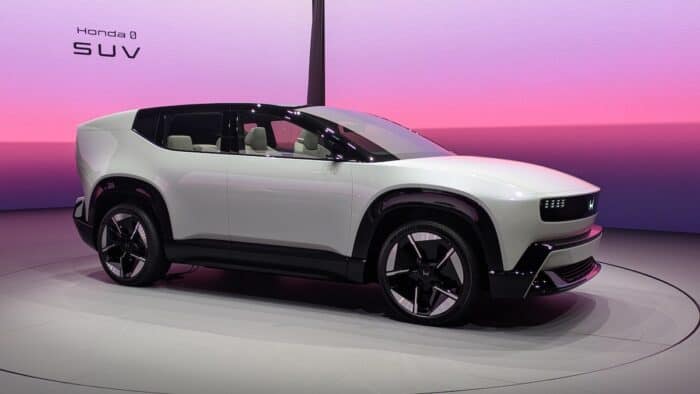
As Honda’s Ohio factory gears up for start of production next year, the first prototype SUVs built from production tooling are already undergoing testing. After five years of work, Kariya-san says it feels good to have reached that stage. But developing a clever, attractive, well-thought-out and – in my view – highly promising vehicle is only the start of the battle. Convincing more buyers that their future lies in a ‘thin, light and wise’ 0 Series model, rather than a taller, heavier, gas-powered sport-utility, will be the real victory.

